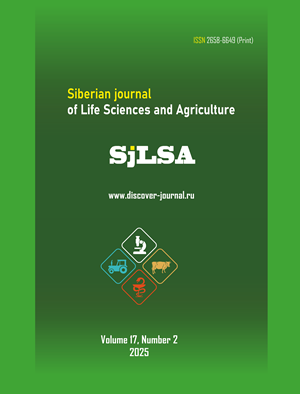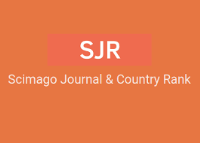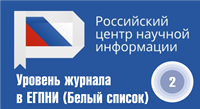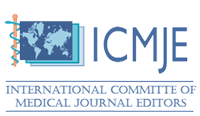Результаты исследования воздействия глифосата и антибиотиков на состав и функции микробиома кишечника бройлеров
Аннотация
Обоснование. Сочетанное действие остаточных количеств пестицидов и антибиотиков в кормах для птиц может приводить к негативному воздействию на состав кишечного микробиома поголовья.
Цель. Проанализировать изменение состава микробиома слепых отростков кишечника бройлеров под воздействием глифосата в количестве 1 ПДК для продуктов питания изолированно и при комбинации глифосата с антибиотиками и противококцидийным препаратом.
Материалы и методы. Подопытных птиц делили на 4 группы: I группа - контрольная, которая получала основной рацион (ОР), II опытная - ОР с добавлением глифосата; III опытная - ОР с добавлением глифосата и ветеринарных антибиотиков; IV опытная - ОР с добавлением глифосата и кокцидиостатика. Состав бактерий определяли методом NGS- секвенирования на автоматическом секвенаторе MiSeq («Illumina, Inc.», США). Программное обеспечение PICRUSt2 (v.2.3.0) (https://github.com/picrust/picrust2) было использовано для проведения прогнозирования функциональной активности метагенома, семейств генов и белков.
Результаты. Результаты показали, что под влиянием глифосата (опытная группа II) на 7-е и 40-е сутки жизни бройлеров из сообщества микроорганизмов химуса слепых отростков кишечника полностью элиминировались микроорганизмы филума Proteobacteria, на 14-е сутки их содержание снижалось в 3,7 раза по сравнению с контрольной группой I (P≤0,05). В группах III и IV их количество возрастало по сравнению с группой II до 3,1 и 7,9 раза соответственно (P≤0,05). В 7-ми суточном возрасте в опытной группе II, а также в 7-40 суточном возрасте в опытной группе III снижалось количество бактерий Ruminococcaceae и Oscillospiraceae до 10,3 и 11,8% соответственно по сравнению с контрольной группой I (P≤0,05). Изменения в составе микробных таксонов под влиянием вводимых в корм пестицидов и лекарственных веществ привели к изменению 185 потенциальных функциональных путей (P≤0,05). Так, снижалась активность путей энергетического, углеводного, протеинового метаболизма, обмена жиров, биосинтеза коферментов и кофакторов, витаминов в опытных группах II-IV по сравнению с контрольной группой I (Р≤0,05).
Заключение. Полученные нами данные указывают на то, что при экспериментальной контаминации корма гербицидом глифосатом, введении в корм ветеринарных антибиотиков и кокцидиостатика в слепых отростках кишечника цыплят-бройлеров происходили изменения структуры микробиома уже на высоких таксономических уровнях, а также наблюдалось угнетение критически важных потенциально заложенных функциональных путей. Это может негативно повлиять на организм хозяина.
Информация о спонсорстве. Исследование выполнено при финансовой поддержке гранта РНФ №22-16-00128.
EDN: ODFQOK
Скачивания
Литература
Егоров, И. А., Манукян, В. А., Ленкова, Т. Н. (2013). Методика проведения научных и производственных исследований по кормлению сельскохозяйственной птицы. Молекулярно-генетические методы определения микрофлоры кишечника. Сергиев Посад: Весь Сергиев Посад. 51 с. ISBN: 978-5-91582-047-9 EDN: https://elibrary.ru/SDOKYP
Йылдырым, Е. А., Грозина, А. А., Вертипрахов, В. Г., Ильина, Л. А., Филиппова, В. А., Лаптев, Г. Ю., Пономарева, Е. С., Дубровин, А. В., Калиткина, К. А., Молотков, В. В., Ахматчин, Д. А., Бражник, Е. А., Новикова, Н. И., Тюрина, Д. Г. (2022). Состав и метаболический потенциал микробиома кишечника бройлеров Gallus Gallus L. под влиянием кормовых добавок при экспериментальном Т-2 токсикозе. Сельскохозяйственная биология, 57(4), 743-761. https://doi.org/10.15389/agrobiology.2022.4.743rus EDN: https://elibrary.ru/DRKMVH
Лаптев, Г. Ю., Йылдырым, Е. А., Тюрина, Д. Г., Ильина, Л. А., Филиппова, В. А., Калиткина, К. А., Дубровин, А. В., Новикова, Н. И., Меликиди, В. Х., Горфункель, Е. П., Пономарева, Е. С., Околелова, Т. М. (2022). Так ли безобиден глифосат? Комбикорма, 7-8, 69-70. EDN: https://elibrary.ru/XJFXLL
Binek, M., Cisek, A. A., Rzewuska, M., Chrobak-Chmiel, D., Stefanska, I., Kizerwetter-Swida, M. (2017). Chicken intestinal microbiome: Development and function. Med. Weter, 73, 618-625. https://doi.org/10.21521/mw.5790
Bortoluzzi, C., Scapini, L. B., Ribeiro, M. V., Pivetta, M. R., Buzim, R., Fernandes, J. I. M. (2019). Effects of β-mannanase supplementation on the intestinal microbiota composition of broiler chickens challenged with a coccidiosis vaccine. Livestock Science, 228, 187-194.
Bortoluzzi, C., Tamburini, I., Geremia, J. (2023). Microbiome modulation, microbiome protein metabolism index, and growth performance of broilers supplemented with a precision biotic. Poult Sci, 102(5), 102595. https://doi.org/10.1016/j.psj.2023.102595 EDN: https://elibrary.ru/TFMWKJ
Chen, H. L., Zhao, X. Y., Zhao, G. X., Huang, H. B., Li, H. R., Shi, C. W., Yang, W. T., Jiang, Y. L., Wang, J. Z., Ye, L. P., Zhao, Q., Wang, C. F., Yang, G. L. (2020). Dissection of the cecal microbial community in chickens after Eimeria tenella infection. Parasites and Vectors, 13, 1-15. https://doi.org/10.1186/s13071-020-3897-6 EDN: https://elibrary.ru/KLVQIE
Cheng, X., Zheng, H., Wang, C., Wang, X., Fei, C., Zhou, W., & Zhang, K. (2022). Effects of salinomycin and ethanamizuril on the three microbial communities in vivo and in vitro. Front Microbiol, 13, 941259. https://doi.org/10.3389/fmi-cb.2022.941259 EDN: https://elibrary.ru/LYZGAW
Chernevskaya, E., Beloborodova, N., Klimenko, N., Pautova, A., Shilkin, D., Gusarov, V., & Tyakht, A. (2020). Serum and fecal profiles of aromatic microbial metabolites reflect gut microbiota disruption in critically ill patients: a prospective observational pilot study. Crit. Care, 24, 312. https://doi.org/10.1186/s-13054-020-03031-0 EDN: https://elibrary.ru/OVJQNC
Chuang, W. Y., Lin, L. J., Shih, H. Der, Shy, Y. M., Chang, S. C., & Lee, T. T. (2021). Intestinal Microbiota, Anti-Inflammatory, and Anti-Oxidative Status of Broiler Chickens Fed Diets Containing Mushroom Waste Compost By-Products. Animals, 11, 2550. https://doi.org/10.3390/ani11092550 EDN: https://elibrary.ru/JLMNFW
Collins, S. L., & Patterson, A. D. (2020). The gut microbiome: an orchestrator of xenobiotic metabolism. Acta Pharm Sin B, 10(1), 19-32. https://doi.org/10.1016/j.apsb.2019.12.001 EDN: https://elibrary.ru/NRUGNV
Defarge, N., Spiroux de Vendômois, J., & Séralini, G. E. (2017). Toxicity of formulants and heavy metals in glyphosate-based herbicides and other pesticides. Toxicol Rep, 5, 156-163. https://doi.org/10.1016/j.toxrep.2017.12.025 EDN: https://elibrary.ru/VFCTZO
El, A. G., Mohsen, H., & Mohamed, S. S. (2012). Effect of Feeding a Combination of Zinc, Manganese and Copper Methionine Chelates of Early Lactation High Producing Dairy Cow. Food and Nutrition Sciences, 1084-1091. https://doi.org/10.4236/FNS.2012.38144
Fathi, M. A., Abdelghani, E., Shen, D., Ren, X., Dai, P., Li, Z., Tang, Q., Li, Y., & Li, C. (2019). Effect of in ovo glyphosate injection on embryonic development, serum biochemistry, antioxidant status and histopathological changes in newly hatched chicks. J. Anim. Physiol. Anim. Nutr, 103, 1776-1784. https://doi.org/10.1111/jpn.13181
Fathi, M. A., Han, G., Kang, R., Shen, D., Shen, J., & Li, C. (2020). Disruption of cytochrome P450 enzymes in the liver and small intestine in chicken embryos in ovo exposed to glyphosate. Environ. Sci, 27, 16865-16875. https://doi.org/10.1007/s11356-020-08269-3 EDN: https://elibrary.ru/CBTYZL
Frick, P. G., Riedler, G., & Brögli, H. (1967). Dose response and minimal daily requirement for vitamin K in man. J Appl Physiol, 23, 387-389. https://doi.org/10.1152/jappl.1967.23.3.387
Grau, D., Grau, N., Gascuel, Q., Paroissin, C., Stratonovitch, C., Lairon, D., Devault, D. A., & Di Cristofaro, J. (2022). Quantifiable urine glyphosate levels detected in 99% of the French population, with higher values in men, in younger people, and in farmers. Environ. Sci. Pollut. Res. Int, 29, 32882-32893. https://doi.org/10.1007/s11356-021-18110-0 EDN: https://elibrary.ru/DJWFDU
Gustafsson, B. E., Daft, F. S., McDaniel, E. G., Smith, J. C., & Fitzgerald, R. J. (1962). Effects of vitamin K-active compounds and intestinal microorganisms in vitamin K-deficient germfree rats. The Journal of Nutrition, 78, 461-468. https://doi.org/10.1093/jn/78.4.461
Hill, J. H., & Round, J. L. (2021). SnapShot: Microbiota effects on host physiology. Cell, 184, 2796-2796. https://doi.org/10.1016/j.cell.2021.04.026 EDN: https://elibrary.ru/DMSPLA
Hill, M. J. (1997). Intestinal flora and endogenous vitamin synthesis. European Journal of Cancer Prevention, 6, S43-S45. https://doi.org/10.1097/00008469-199703001-00009
Holmes, E., Li, J. V., Marchesi, J. R., & Nicholson, J. K. (2012). Gut microbiota composition and activity in relation to host metabolic phenotype and disease risk. Cell Metab, 16(5), 559-564. https://doi.org/10.1016/j.cmet.2012.10.007
Huang, S., Zhang, C., Xu, T., Shaukat, A., He, Y., Chen, P., Lin, L., Yue, K., Cao, Q., & Tong, X. (2022). Integrated Fecal Microbiome and Metabolomics Reveals a Novel Potential Biomarker for Predicting Tibial Dyschondroplasia in Chickens. Front Physiol, 13, 887207. https://doi.org/10.3389/fphys.2022.887207 EDN: https://elibrary.ru/HYQFGK
Kimura, N., Mimura, F., Nishida, S., & Kobayashi, A. (1976). Studies on the relationship between intestinal flora and cecal coccidiosis in chicken. Poult. Sci, 55, 1375-1383. https://doi.org/10.3382/ps.0551375
Lakshminarayanan, B., Harris, H. M. B., Coakley, M., O’Sullivan, Ó., Stanton, C., Pruteanu, M., Shanahan, F., O’Toole, P. W., Ross, R. P., & On Behalf Of The Eldermet Consortium. (2013). Prevalence and characterization of Clostridium perfringens from the faecal microbiota of elderly Irish subjects. Journal of medical microbiology, 62(3), 457-466. https://doi.org/10.1099/jmm.0.052258-0
Lee, S., La, T. M., Lee, H. J., Choi, I. S., Song, C. S., Park, S. Y., Lee, J. B., & Lee, S. W. (2019). Characterization of microbial communities in the chicken oviduct and the origin of chicken embryo gut microbiota. Sci. Rep, 9, 6838. https://doi.org/10.1038/s41598-019-43280-w EDN: https://elibrary.ru/KVQXQB
Lima, J. (2023). Estimating Microbial Protein Synthesis in the Rumen—Can ‘Omics’ Methods Provide New Insights into a Long-Standing Question? Vet. Sci, 10.
Lu, C., Yan, Y., Jian, F., & Ning, C. (2021). Coccidia-microbiota interactions and their effects on the host. Front. Cell Infect. Microbiol, 11, 751481. https://doi.org/10.3389/fcimb.2021.751481 EDN: https://elibrary.ru/IPCEDA
Maruvada, P., Leone, V., Kaplan, L. M., & Chang, E. B. (2017). The Human Microbiome and Obesity: Moving beyond Associations. Cell Host Microbe, 22, 589-599. https://doi.org/10.1016/j.chom.2017.10.005 EDN: https://elibrary.ru/YKKOZQ
McCormack, U. M., Curiao, T., Buzoianu, S. G., Prieto, M. L., Ryan, T., Varley, P., Crispie, F., Magowan, E., Metzler-Zebeli, B. U., Berry, D., O’Sullivan, O., Cotter, P. D., Gardiner, G. E., & Lawlor, P. G. (2017). Exploring a possible link between the intestinal microbiota and feed efficiency in pigs. Appl. Environ. Microbiol, 83, e00380-17. https://doi.org/10.1128/AEM.00380-17
McDonald, J. E., Marchesi, J. R., & Koskella, B. (2020). Application of ecological and evolutionary theory to microbiome community dynamics across systems. Proc. Biol. Sci, 287, 20202886. https://doi.org/10.1098/rspb.2020.2886 EDN: https://elibrary.ru/ECDLLF
Miquel, S., Martin, R., Rossi, O., Bermudez-Humaran, L. G., Chatel, J. M., Sokol, H., Thomas, M., Wells, J. M., & Langella, P. (2013). Faecalibacterium prausnitzii and human intestinal health. Curr. Opin. Microbiol, 16, 255-261. https://doi.org/10.1016/j.mib.2013.06.003
Moon, C. D., Young, W., Maclean, P. H., Cookson, A. L., & Bermingham, E. N. (2018). Metagenomic insights into the roles of Proteobacteria in the gastrointestinal microbiomes of healthy dogs and cats. Microbiologyopen, 7(5), e00677. https://doi.org/10.1002/mbo3.677 EDN: https://elibrary.ru/CTMKJI
Orrell, K. E., & Melnyk, R. A. (2021). Large Clostridial Toxins: Mechanisms and Roles in Disease. Microbiol Mol Biol Rev, 85(3), e0006421. https://doi.org/10.1128/MMBR.00064-21 EDN: https://elibrary.ru/IMHVYN
Pereira, R., Bortoluzzi, C., Durrer, A., Fagundes, N. S., Pedroso, A. A., Rafael, J. M., de Lima Perim, J. E., Zavarize, K. C., Napty, G. S., & Andreote, F. D. (2019). Performance and intestinal microbiota of chickens receiving probiotic in the feed and submitted to antibiotic therapy. J. Anim. Physiol. Anim. Nutr, 103, 72-86. https://doi.org/10.1111/jpn.13004
Pires, P. G. D. S., Torres, P., Teixeira Soratto, T. A., Filho, V. B., Hauptli, L., Wagner, G., Haese, D., Pozzatti, C. D., & Moraes, P. O. (2022). Comparison of functional-oil blend and anticoccidial antibiotics effects on performance and microbiota of broiler chickens challenged by coccidiosis. PLoS One, 17(7), e0270350. https://doi.org/10.1371/journal.pone.0270350 EDN: https://elibrary.ru/LDTMUN
Rajilic-Stojanovic, M., & De Vos, W. M. (2014). The first 1000 cultured species of the human gastrointestinal microbiota. FEMS Microbiol Rev, 38(5), 996-1047. https://doi.org/10.1111/1574-6976.12075
Robinson, K., Becker, S., Xiao, Y., Lyu, W., Yang, Q., Zhu, H., Yang, H., Zhao, J., & Zhang, G. (2019). Differential Impact of Subtherapeutic Antibiotics and Ionophores on Intestinal Microbiota of Broilers. Microorganisms, 7(9), 282. https://doi.org/10.3390/microorganisms7090282
Saxena, S., Saxena, V. K., Tomar, S., Sapcota, D., & Gonmei, G. (2016). Characterisation of caecum and crop microbiota of Indian indigenous chicken targeting multiple hypervariable regions within 16S rRNA gene. Brit. Poult. Sci, 57, 381-389. https://doi.org/10.1080/00071668.2016.1161728
Schokker, D., de Klerk, B., Borg, R., Bossers, A., & Rebel, J. M. J. (2021). Factors Influencing the Succession of the Fecal Microbiome in Broilers. Livest. Sci, 247, 104486. https://doi.org/10.1016/j.livsci.2021.104486 EDN: https://elibrary.ru/PDMHXO
Schönbrunn, E., Eschenburg, S., Shuttleworth, W. A., Schloss, J. V., Amrhein, N., Evans, J. N. S., & Kabsch, W. (2001). Interaction of the herbicide glyphosate with its target enzyme 5-enolpyruvylshikimate 3-phosphate synthase in atomic detail. Proc. Natl. Acad. Sci, 98, 1376-1380. https://doi.org/10.1073/pnas.98.4.1376 EDN: https://elibrary.ru/LSWCXN
Schwartz, D. J., Langdon, A. E., & Dantas, G. (2020). Understanding the impact of antibiotic perturbation on the human microbiome. Genome Med, 12, 82. https://doi.org/10.1186/s13073-020-00782-x EDN: https://elibrary.ru/AJGCKF
Shin, B., Park, C., & Park, W. (2020). Stress responses linked to antimicrobial resistance in Acinetobacter species. Appl. Microbiol. Biotechnol, 104, 1423-1435. https://doi.org/10.1007/s00253-019-10317-z EDN: https://elibrary.ru/QTZXAD
Simpson, K. M., Callan, R. J., & Van Metre, D. C. (2018). Clostridial Abomasitis and Enteritis in Ruminants. Vet Clin North Am Food Anim Pract, 34(1), 155-184. https://doi.org/10.1016/j.cvfa.2017.10.010
Szabó, R., Szemerédy, G., Kormos, É., Lehel, J., & Budai, P. (2018). Studies on joint toxic effects of a glyphosate herbicide (FOZÁT 480) and a heavy metal (cadmium) on chicken embryos. AGR, 2, 37-43.
Waite, D. W., & Taylor, M. W. (2014). Characterizing the avian gut microbiota: Membership, driving influences, and potential function. Front. Microbiol, 5, 223. https://doi.org/10.3389/fmicb.2014.00223
Willson, N. L., Nattrass, G. S., Hughes, R. J., Moore, R. J., Stanley, D., Hynd, P. I., & Forder, R. E. A. (2018). Correlations between intestinal innate immune genes and cecal microbiota highlight potential for probiotic development for immune modulation in poultry. Appl. Microbiol. Biotechnol, 102, 9317-9329. https://doi.org/10.1007/s00253-018-9281-1 EDN: https://elibrary.ru/VJIVQO
Xi, Y., Shuling, N., Kunyuan, T., Qiuyang, Z., Hewen, D., ChenCheng, G., Tianhe, Y., Liancheng, L., & Xin, F. (2019). Characteristics of the intestinal flora of specific pathogen free chickens with age. Microb. Pathog, 132, 325-334. https://doi.org/10.1016/j.micpath.2019.05.014 EDN: https://elibrary.ru/FZDTAH
Xu, S. Y., Aweya, J. J., Li, N., Deng, R. Y., Chen, W. Y., Tang, J., & Cheong, K. L. (2019). Microbial catabolism of porphyra haitanensis polysaccharides by human gut microbiota. Food Chem, 289, 177-186. https://doi.org/10.1016/j.food-chem.2019.03.050
Yang, J., Li, Y., Wen, Z., Liu, W., Meng, L., & Huang, H. (2021). Oscillospira - a candidate for the next-generation probiotics. Gut Microbes, 13(1), 1987783. https://doi.org/10.1080/19490976.2021.1987783 EDN: https://elibrary.ru/IDUYRW
Yildirim, E. A., Laptev, G. Y., Tiurina, D. G., Gorfunkel, E. P., Ilina, L. A., Filippova, V. A., Dubrovin, A. V., Brazhnik, E. A., Novikova, N. I., Melikidi, V. K., Kalitkina, K. A., Ponomareva, E. S., Griffin, D. K., & Romanov, M. N. (2024). Investigating adverse effects of chronic dietary exposure to herbicide glyphosate on zootechnical characteristics and clinical, biochemical and immunological blood parameters in broiler chickens. Vet Res Commun, 48(1), 153-164. https://doi.org/10.1007/s11259-023-10195-x EDN: https://elibrary.ru/PUTFZG
Zhang, J., Jin, W., Jiang, Y., Xie, F., & Mao, S. (2022). Response of milk performance, rumen and hindgut microbiome to dietary supplementation with Aspergillus oryzae fermentation extracts in dairy cows. Curr. Microbiol, 79, 113.
Zhang, K., Wang, C., Li, Y., He, J., Wang, M., & Wang, X. (2020). Rat two-generation reproductive toxicity and teratogenicity studies of a novel coccidiostat - Ethanamizuril. Regul. Toxicol. Pharmacol, 113, 104623. https://doi.org/10.1016/j.yrtph.2020.104623 EDN: https://elibrary.ru/BUZXEZ
Zhang, Z., Tang, H., Chen, P., Xie, H., & Tao, Y. (2019). Demystifying the manipulation of host immunity, metabolism, and extraintestinal tumors by the gut microbiome. Signal Transduct. Target. Ther, 4, 41. https://doi.org/10.1038/s41392-019-0074-5 EDN: https://elibrary.ru/FJSSIY
Zheng, D., Liwinski, T., & Elinav, E. (2020). Interaction between microbiota and immunity in health and disease. Cell Res, 30, 492-506. https://doi.org/10.1038/s41422-020-0332-7 EDN: https://elibrary.ru/POIHUF
Zhou, S., Wang, F., Wong, E. T., Fonkem, E., Hsieh, T. C., Wu, J. M., & Wu, E. (2013). Salinomycin: a novel anti-cancer agent with known anti-coccidial activities. Current medicinal chemistry, 20(33), 4095-4101. https://doi.org/10.2174/15672050113109990199
References
Egorov, I. A., Manukyan, V. A., & Lankova, T. N. (2013). Methodology for conducting scientific and production research on feeding poultry. Molecular genetic methods for determining intestinal microflora. Sergiev Posad: Vsyo Sergiev Posad. 51 p. ISBN: 978-5-91582-047-9 EDN: https://elibrary.ru/SDOKYP
Yildyrym, E. A., Grozina, A. A., Vertiprakhov, V. G., Ilyina, L. A., Filippova, V. A., Laptev, G. Yu., Ponomareva, E. S., Dubrovin, A. V., Kalitkina, K. A., Molotkov, V. V., Akhmatchin, D. A., Brazhnik, E. A., Novikova, N. I., & Tyurina, D. G. (2022). Composition and metabolic potential of the gut microbiome of broilers Gallus Gallus L. under the influence of feed additives in experimental T-2 toxinosis. Agricultural Biology, 57(4), 743-761. https://doi.org/10.15389/agrobiology.2022.4.743rus EDN: https://elibrary.ru/DRKMVH
Laptev, G. Yu., Yildyrym, E. A., Tyurina, D. G., Ilyina, L. A., Filippova, V. A., Kalitkina, K. A., Dubrovin, A. V., Novikova, N. I., Melikidi, V. Kh., Gorfunkel, E. P., Ponomareva, E. S., & Okolelova, T. M. (2022). Is glyphosate really harmless? Compound Feed, 7-8, 69-70. EDN: https://elibrary.ru/XJFXLL
Binek, M., Cisek, A. A., Rzewuska, M., Chrobak-Chmiel, D., Stefanska, I., Kizerwetter-Swida, M. (2017). Chicken intestinal microbiome: Development and function. Med. Weter, 73, 618-625. https://doi.org/10.21521/mw.5790
Bortoluzzi, C., Scapini, L. B., Ribeiro, M. V., Pivetta, M. R., Buzim, R., Fernandes, J. I. M. (2019). Effects of β-mannanase supplementation on the intestinal microbiota composition of broiler chickens challenged with a coccidiosis vaccine. Livestock Science, 228, 187-194.
Bortoluzzi, C., Tamburini, I., Geremia, J. (2023). Microbiome modulation, microbiome protein metabolism index, and growth performance of broilers supplemented with a precision biotic. Poult Sci, 102(5), 102595. https://doi.org/10.1016/j.psj.2023.102595 EDN: https://elibrary.ru/TFMWKJ
Chen, H. L., Zhao, X. Y., Zhao, G. X., Huang, H. B., Li, H. R., Shi, C. W., Yang, W. T., Jiang, Y. L., Wang, J. Z., Ye, L. P., Zhao, Q., Wang, C. F., Yang, G. L. (2020). Dissection of the cecal microbial community in chickens after Eimeria tenella infection. Parasites and Vectors, 13, 1-15. https://doi.org/10.1186/s13071-020-3897-6 EDN: https://elibrary.ru/KLVQIE
Cheng, X., Zheng, H., Wang, C., Wang, X., Fei, C., Zhou, W., & Zhang, K. (2022). Effects of salinomycin and ethanamizuril on the three microbial communities in vivo and in vitro. Front Microbiol, 13, 941259. https://doi.org/10.3389/fmi-cb.2022.941259 EDN: https://elibrary.ru/LYZGAW
Chernevskaya, E., Beloborodova, N., Klimenko, N., Pautova, A., Shilkin, D., Gusarov, V., & Tyakht, A. (2020). Serum and fecal profiles of aromatic microbial metabolites reflect gut microbiota disruption in critically ill patients: a prospective observational pilot study. Crit. Care, 24, 312. https://doi.org/10.1186/s-13054-020-03031-0 EDN: https://elibrary.ru/OVJQNC
Chuang, W. Y., Lin, L. J., Shih, H. Der, Shy, Y. M., Chang, S. C., & Lee, T. T. (2021). Intestinal Microbiota, Anti-Inflammatory, and Anti-Oxidative Status of Broiler Chickens Fed Diets Containing Mushroom Waste Compost By-Products. Animals, 11, 2550. https://doi.org/10.3390/ani11092550 EDN: https://elibrary.ru/JLMNFW
Collins, S. L., & Patterson, A. D. (2020). The gut microbiome: an orchestrator of xenobiotic metabolism. Acta Pharm Sin B, 10(1), 19-32. https://doi.org/10.1016/j.apsb.2019.12.001 EDN: https://elibrary.ru/NRUGNV
Defarge, N., Spiroux de Vendômois, J., & Séralini, G. E. (2017). Toxicity of formulants and heavy metals in glyphosate-based herbicides and other pesticides. Toxicol Rep, 5, 156-163. https://doi.org/10.1016/j.toxrep.2017.12.025 EDN: https://elibrary.ru/VFCTZO
El, A. G., Mohsen, H., & Mohamed, S. S. (2012). Effect of Feeding a Combination of Zinc, Manganese and Copper Methionine Chelates of Early Lactation High Producing Dairy Cow. Food and Nutrition Sciences, 1084-1091. https://doi.org/10.4236/FNS.2012.38144
Fathi, M. A., Abdelghani, E., Shen, D., Ren, X., Dai, P., Li, Z., Tang, Q., Li, Y., & Li, C. (2019). Effect of in ovo glyphosate injection on embryonic development, serum biochemistry, antioxidant status and histopathological changes in newly hatched chicks. J. Anim. Physiol. Anim. Nutr, 103, 1776-1784. https://doi.org/10.1111/jpn.13181
Fathi, M. A., Han, G., Kang, R., Shen, D., Shen, J., & Li, C. (2020). Disruption of cytochrome P450 enzymes in the liver and small intestine in chicken embryos in ovo exposed to glyphosate. Environ. Sci, 27, 16865-16875. https://doi.org/10.1007/s11356-020-08269-3 EDN: https://elibrary.ru/CBTYZL
Frick, P. G., Riedler, G., & Brögli, H. (1967). Dose response and minimal daily requirement for vitamin K in man. J Appl Physiol, 23, 387-389. https://doi.org/10.1152/jappl.1967.23.3.387
Grau, D., Grau, N., Gascuel, Q., Paroissin, C., Stratonovitch, C., Lairon, D., Devault, D. A., & Di Cristofaro, J. (2022). Quantifiable urine glyphosate levels detected in 99% of the French population, with higher values in men, in younger people, and in farmers. Environ. Sci. Pollut. Res. Int, 29, 32882-32893. https://doi.org/10.1007/s11356-021-18110-0 EDN: https://elibrary.ru/DJWFDU
Gustafsson, B. E., Daft, F. S., McDaniel, E. G., Smith, J. C., & Fitzgerald, R. J. (1962). Effects of vitamin K-active compounds and intestinal microorganisms in vitamin K-deficient germfree rats. The Journal of Nutrition, 78, 461-468. https://doi.org/10.1093/jn/78.4.461
Hill, J. H., & Round, J. L. (2021). SnapShot: Microbiota effects on host physiology. Cell, 184, 2796-2796. https://doi.org/10.1016/j.cell.2021.04.026 EDN: https://elibrary.ru/DMSPLA
Hill, M. J. (1997). Intestinal flora and endogenous vitamin synthesis. European Journal of Cancer Prevention, 6, S43-S45. https://doi.org/10.1097/00008469-199703001-00009
Holmes, E., Li, J. V., Marchesi, J. R., & Nicholson, J. K. (2012). Gut microbiota composition and activity in relation to host metabolic phenotype and disease risk. Cell Metab, 16(5), 559-564. https://doi.org/10.1016/j.cmet.2012.10.007
Huang, S., Zhang, C., Xu, T., Shaukat, A., He, Y., Chen, P., Lin, L., Yue, K., Cao, Q., & Tong, X. (2022). Integrated Fecal Microbiome and Metabolomics Reveals a Novel Potential Biomarker for Predicting Tibial Dyschondroplasia in Chickens. Front Physiol, 13, 887207. https://doi.org/10.3389/fphys.2022.887207 EDN: https://elibrary.ru/HYQFGK
Kimura, N., Mimura, F., Nishida, S., & Kobayashi, A. (1976). Studies on the relationship between intestinal flora and cecal coccidiosis in chicken. Poult. Sci, 55, 1375-1383. https://doi.org/10.3382/ps.0551375
Lakshminarayanan, B., Harris, H. M. B., Coakley, M., O’Sullivan, Ó., Stanton, C., Pruteanu, M., Shanahan, F., O’Toole, P. W., Ross, R. P., & On Behalf Of The Eldermet Consortium. (2013). Prevalence and characterization of Clostridium perfringens from the faecal microbiota of elderly Irish subjects. Journal of medical microbiology, 62(3), 457-466. https://doi.org/10.1099/jmm.0.052258-0
Lee, S., La, T. M., Lee, H. J., Choi, I. S., Song, C. S., Park, S. Y., Lee, J. B., & Lee, S. W. (2019). Characterization of microbial communities in the chicken oviduct and the origin of chicken embryo gut microbiota. Sci. Rep, 9, 6838. https://doi.org/10.1038/s41598-019-43280-w EDN: https://elibrary.ru/KVQXQB
Lima, J. (2023). Estimating Microbial Protein Synthesis in the Rumen—Can ‘Omics’ Methods Provide New Insights into a Long-Standing Question? Vet. Sci, 10.
Lu, C., Yan, Y., Jian, F., & Ning, C. (2021). Coccidia-microbiota interactions and their effects on the host. Front. Cell Infect. Microbiol, 11, 751481. https://doi.org/10.3389/fcimb.2021.751481 EDN: https://elibrary.ru/IPCEDA
Maruvada, P., Leone, V., Kaplan, L. M., & Chang, E. B. (2017). The Human Microbiome and Obesity: Moving beyond Associations. Cell Host Microbe, 22, 589-599. https://doi.org/10.1016/j.chom.2017.10.005 EDN: https://elibrary.ru/YKKOZQ
McCormack, U. M., Curiao, T., Buzoianu, S. G., Prieto, M. L., Ryan, T., Varley, P., Crispie, F., Magowan, E., Metzler-Zebeli, B. U., Berry, D., O’Sullivan, O., Cotter, P. D., Gardiner, G. E., & Lawlor, P. G. (2017). Exploring a possible link between the intestinal microbiota and feed efficiency in pigs. Appl. Environ. Microbiol, 83, e00380-17. https://doi.org/10.1128/AEM.00380-17
McDonald, J. E., Marchesi, J. R., & Koskella, B. (2020). Application of ecological and evolutionary theory to microbiome community dynamics across systems. Proc. Biol. Sci, 287, 20202886. https://doi.org/10.1098/rspb.2020.2886 EDN: https://elibrary.ru/ECDLLF
Miquel, S., Martin, R., Rossi, O., Bermudez-Humaran, L. G., Chatel, J. M., Sokol, H., Thomas, M., Wells, J. M., & Langella, P. (2013). Faecalibacterium prausnitzii and human intestinal health. Curr. Opin. Microbiol, 16, 255-261. https://doi.org/10.1016/j.mib.2013.06.003
Moon, C. D., Young, W., Maclean, P. H., Cookson, A. L., & Bermingham, E. N. (2018). Metagenomic insights into the roles of Proteobacteria in the gastrointestinal microbiomes of healthy dogs and cats. Microbiologyopen, 7(5), e00677. https://doi.org/10.1002/mbo3.677 EDN: https://elibrary.ru/CTMKJI
Orrell, K. E., & Melnyk, R. A. (2021). Large Clostridial Toxins: Mechanisms and Roles in Disease. Microbiol Mol Biol Rev, 85(3), e0006421. https://doi.org/10.1128/MMBR.00064-21 EDN: https://elibrary.ru/IMHVYN
Pereira, R., Bortoluzzi, C., Durrer, A., Fagundes, N. S., Pedroso, A. A., Rafael, J. M., de Lima Perim, J. E., Zavarize, K. C., Napty, G. S., & Andreote, F. D. (2019). Performance and intestinal microbiota of chickens receiving probiotic in the feed and submitted to antibiotic therapy. J. Anim. Physiol. Anim. Nutr, 103, 72-86. https://doi.org/10.1111/jpn.13004
Pires, P. G. D. S., Torres, P., Teixeira Soratto, T. A., Filho, V. B., Hauptli, L., Wagner, G., Haese, D., Pozzatti, C. D., & Moraes, P. O. (2022). Comparison of functional-oil blend and anticoccidial antibiotics effects on performance and microbiota of broiler chickens challenged by coccidiosis. PLoS One, 17(7), e0270350. https://doi.org/10.1371/journal.pone.0270350 EDN: https://elibrary.ru/LDTMUN
Rajilic-Stojanovic, M., & De Vos, W. M. (2014). The first 1000 cultured species of the human gastrointestinal microbiota. FEMS Microbiol Rev, 38(5), 996-1047. https://doi.org/10.1111/1574-6976.12075
Robinson, K., Becker, S., Xiao, Y., Lyu, W., Yang, Q., Zhu, H., Yang, H., Zhao, J., & Zhang, G. (2019). Differential Impact of Subtherapeutic Antibiotics and Ionophores on Intestinal Microbiota of Broilers. Microorganisms, 7(9), 282. https://doi.org/10.3390/microorganisms7090282
Saxena, S., Saxena, V. K., Tomar, S., Sapcota, D., & Gonmei, G. (2016). Characterisation of caecum and crop microbiota of Indian indigenous chicken targeting multiple hypervariable regions within 16S rRNA gene. Brit. Poult. Sci, 57, 381-389. https://doi.org/10.1080/00071668.2016.1161728
Schokker, D., de Klerk, B., Borg, R., Bossers, A., & Rebel, J. M. J. (2021). Factors Influencing the Succession of the Fecal Microbiome in Broilers. Livest. Sci, 247, 104486. https://doi.org/10.1016/j.livsci.2021.104486 EDN: https://elibrary.ru/PDMHXO
Schönbrunn, E., Eschenburg, S., Shuttleworth, W. A., Schloss, J. V., Amrhein, N., Evans, J. N. S., & Kabsch, W. (2001). Interaction of the herbicide glyphosate with its target enzyme 5-enolpyruvylshikimate 3-phosphate synthase in atomic detail. Proc. Natl. Acad. Sci, 98, 1376-1380. https://doi.org/10.1073/pnas.98.4.1376 EDN: https://elibrary.ru/LSWCXN
Schwartz, D. J., Langdon, A. E., & Dantas, G. (2020). Understanding the impact of antibiotic perturbation on the human microbiome. Genome Med, 12, 82. https://doi.org/10.1186/s13073-020-00782-x EDN: https://elibrary.ru/AJGCKF
Shin, B., Park, C., & Park, W. (2020). Stress responses linked to antimicrobial resistance in Acinetobacter species. Appl. Microbiol. Biotechnol, 104, 1423-1435. https://doi.org/10.1007/s00253-019-10317-z EDN: https://elibrary.ru/QTZXAD
Simpson, K. M., Callan, R. J., & Van Metre, D. C. (2018). Clostridial Abomasitis and Enteritis in Ruminants. Vet Clin North Am Food Anim Pract, 34(1), 155-184. https://doi.org/10.1016/j.cvfa.2017.10.010
Szabó, R., Szemerédy, G., Kormos, É., Lehel, J., & Budai, P. (2018). Studies on joint toxic effects of a glyphosate herbicide (FOZÁT 480) and a heavy metal (cadmium) on chicken embryos. AGR, 2, 37-43.
Waite, D. W., & Taylor, M. W. (2014). Characterizing the avian gut microbiota: Membership, driving influences, and potential function. Front. Microbiol, 5, 223. https://doi.org/10.3389/fmicb.2014.00223
Willson, N. L., Nattrass, G. S., Hughes, R. J., Moore, R. J., Stanley, D., Hynd, P. I., & Forder, R. E. A. (2018). Correlations between intestinal innate immune genes and cecal microbiota highlight potential for probiotic development for immune modulation in poultry. Appl. Microbiol. Biotechnol, 102, 9317-9329. https://doi.org/10.1007/s00253-018-9281-1 EDN: https://elibrary.ru/VJIVQO
Xi, Y., Shuling, N., Kunyuan, T., Qiuyang, Z., Hewen, D., ChenCheng, G., Tianhe, Y., Liancheng, L., & Xin, F. (2019). Characteristics of the intestinal flora of specific pathogen free chickens with age. Microb. Pathog, 132, 325-334. https://doi.org/10.1016/j.micpath.2019.05.014 EDN: https://elibrary.ru/FZDTAH
Xu, S. Y., Aweya, J. J., Li, N., Deng, R. Y., Chen, W. Y., Tang, J., & Cheong, K. L. (2019). Microbial catabolism of porphyra haitanensis polysaccharides by human gut microbiota. Food Chem, 289, 177-186. https://doi.org/10.1016/j.food-chem.2019.03.050
Yang, J., Li, Y., Wen, Z., Liu, W., Meng, L., & Huang, H. (2021). Oscillospira - a candidate for the next-generation probiotics. Gut Microbes, 13(1), 1987783. https://doi.org/10.1080/19490976.2021.1987783 EDN: https://elibrary.ru/IDUYRW
Yildirim, E. A., Laptev, G. Y., Tiurina, D. G., Gorfunkel, E. P., Ilina, L. A., Filippova, V. A., Dubrovin, A. V., Brazhnik, E. A., Novikova, N. I., Melikidi, V. K., Kalitkina, K. A., Ponomareva, E. S., Griffin, D. K., & Romanov, M. N. (2024). Investigating adverse effects of chronic dietary exposure to herbicide glyphosate on zootechnical characteristics and clinical, biochemical and immunological blood parameters in broiler chickens. Vet Res Commun, 48(1), 153-164. https://doi.org/10.1007/s11259-023-10195-x EDN: https://elibrary.ru/PUTFZG
Zhang, J., Jin, W., Jiang, Y., Xie, F., & Mao, S. (2022). Response of milk performance, rumen and hindgut microbiome to dietary supplementation with Aspergillus oryzae fermentation extracts in dairy cows. Curr. Microbiol, 79, 113.
Zhang, K., Wang, C., Li, Y., He, J., Wang, M., & Wang, X. (2020). Rat two-generation reproductive toxicity and teratogenicity studies of a novel coccidiostat - Ethanamizuril. Regul. Toxicol. Pharmacol, 113, 104623. https://doi.org/10.1016/j.yrtph.2020.104623 EDN: https://elibrary.ru/BUZXEZ
Zhang, Z., Tang, H., Chen, P., Xie, H., & Tao, Y. (2019). Demystifying the manipulation of host immunity, metabolism, and extraintestinal tumors by the gut microbiome. Signal Transduct. Target. Ther, 4, 41. https://doi.org/10.1038/s41392-019-0074-5 EDN: https://elibrary.ru/FJSSIY
Zheng, D., Liwinski, T., & Elinav, E. (2020). Interaction between microbiota and immunity in health and disease. Cell Res, 30, 492-506. https://doi.org/10.1038/s41422-020-0332-7 EDN: https://elibrary.ru/POIHUF
Zhou, S., Wang, F., Wong, E. T., Fonkem, E., Hsieh, T. C., Wu, J. M., & Wu, E. (2013). Salinomycin: a novel anti-cancer agent with known anti-coccidial activities. Current medicinal chemistry, 20(33), 4095-4101. https://doi.org/10.2174/15672050113109990199
Copyright (c) 2025 Daria G. Tyurina, Elena A. Yildirim, Georgy Y. Laptev, Natalia I. Novikova, Larisa A. Ilyina, Valentina A. Filippova, Andrey V. Dubrovin, Kseniya A. Kalitkina, Ekaterina S. Ponomareva, Irina A. Klyuchnikova, Vasiliy A. Zaikin, Elena P. Gorfunkel

Это произведение доступно по лицензии Creative Commons «Attribution-NonCommercial-NoDerivatives» («Атрибуция — Некоммерческое использование — Без производных произведений») 4.0 Всемирная.

























































